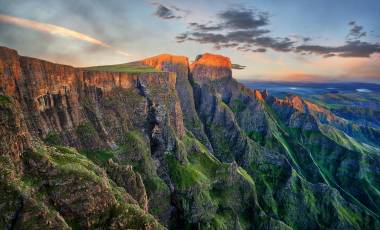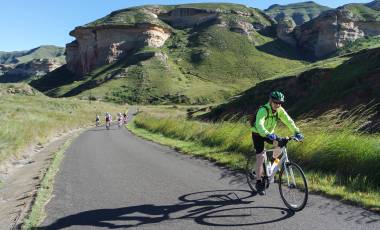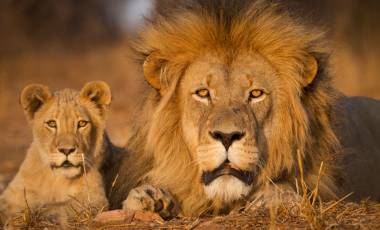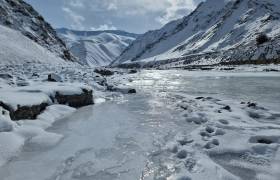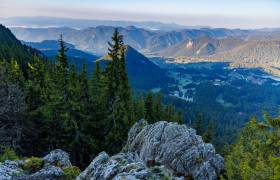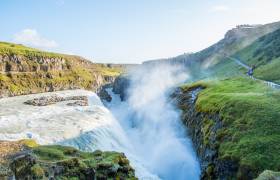Read time – 6 minutes
Coastlines have the power to mesmerise, whether due to tall cliffs buffeted by angry waves, tranquil bays where the tide gently laps the shore, or palm-fringed beaches bordering crystal clear lagoons.
Cape Town and the Garden Route
The world is full of these delectable sights where land and sea meet. To me, however, the stretch of coast right at the bottom of Africa has to be one of the most beautiful. It was, therefore, with some excitement that I boarded a plane heading to Port Elizabeth, South Africa to join the Cape Town and the Garden Route trip.
The first major stop on our trip west was actually north: Addo National Park. The reserve was initially created to protect a handful of elephants, and coming face to trunk with some of the inhabitant pachyderms was undoubtedly one of the highlights of the first full day on tour, but it wasn’t the only one.
Everywhere in Addo, one of nature’s great comical acts takes place: the waltz of the Dung beetle.
You’ve probably seen this on TV. The little critters push a ball of dung with their hind legs. Occasionally they’ll climb on top and whirl around, presumably to orientate themselves. They’ll stumble and fall, and, from time to time, they’ll get their excrement ball caught on a small stick, resulting in increasing frustration.
Seeing elephants, meerkats, jackals, kudu and eagles, amongst others, was great, but what I learned that day was that watching a small beetle push some poo around could be amazingly entertaining!
Leaving the beetles to their dance, we turned west and embarked on a journey through one of South Africa’s most beautiful regions, the Garden Route. The name comes from the abundant vegetation surrounding lakes and lagoons and stretching along the coast following the Indian and, later, Atlantic oceans.
The official start of the Garden Route is at Tsitsikamma, near the village of Storm’s River. Here the forest comes down to the water’s edge and great big waves come crashing down dramatically in raucous thunder.
As we continued on our travels we crossed canyons and gorges, drove along fynbos forests and past quaint towns. We took in the Knysna Heads, giant rock outcrops which guard the entrance to Knysna Bay, before turning off the Garden Route again and heading inland once more to the ostrich capital of the world.
Oudtshoorn is only a short distance from the cool coastal region but, being in the arid Klein Karoo, it feels a world away.
Going over a mountain pass, the temperature rises sharply whilst the vegetation becomes sparser. Green becomes brown and ostrich farms start to appear everywhere. Where you would expect to see cows you see ostriches.
This is a completely different side of South Africa and the perfect place to have a taste of the lean, succulent red meat of this tall, lanky bird.
South African Food
South Africa is a country of barbeques, or rather braais, and whilst vegetarians are catered for, it is a meat-lovers heaven. Whether it’s a venison steak (the term is used to refer to most game meats) in red wine sauce for dinner or a slice of spicy kudu biltong (similar to jerky) for a snack, the local cuisine can certainly get the incisors going.
Of course, there’s much more to it than meat. Knysna is famous for its oysters, and the fish all along the coast is delicious. Then there’s the wine, as we would discover further along our route.
Wine Country
Before reaching wine country, however, we stopped at the whale capital of the world, Hermanus. In season, which sadly it was not, it is the best place on land to see whales.
Standing atop the towering coastal cliffs outside town from September through to end of December, you can see Southern right whales coming into the bay to calve and spend a few months as their young gather strength.
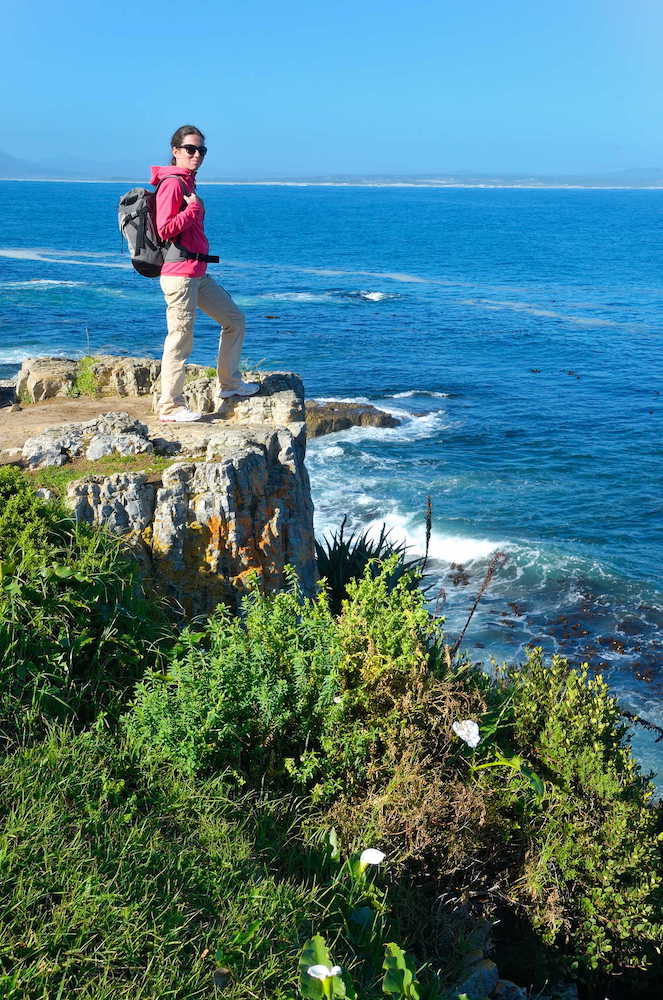 Overlooking the coast
Overlooking the coast
South African wine is now one of the world’s most famous. Winemaking in this region was originally started by French Huguenots as far back as the 17th Century.
Today vineyards cover many lands surrounding Cape Town and tasting different varieties of red, white and sparkling wine is a great way to while away an afternoon.
Finally, at the bottom of Africa is a city I’ve been lucky enough to visit numerous times and never tire of returning to. Cape Town sits in the shadow of Table Mountain, a monolith often blanketed by clouds known as the tablecloth.
This vibrant city is a cosmopolitan melting pot of cultures as Africa, Europe and Asia have all heavily influenced the people who live here. This left us with just one last place to visit: the Cape Peninsula, which stretches out below Cape Town to Cape Point and the Cape of Good Hope.
We headed along the sumptuous Chapman’s Peak drive on our way to Africa’s windswept most south-westerly point, marking the end of our journey. At least geographically there was a bonus, a final highlight as we returned to Cape Town. Baby Jackass penguins!
Find more tours of South Africa and Cape Town below and plan your trip of a lifetime.

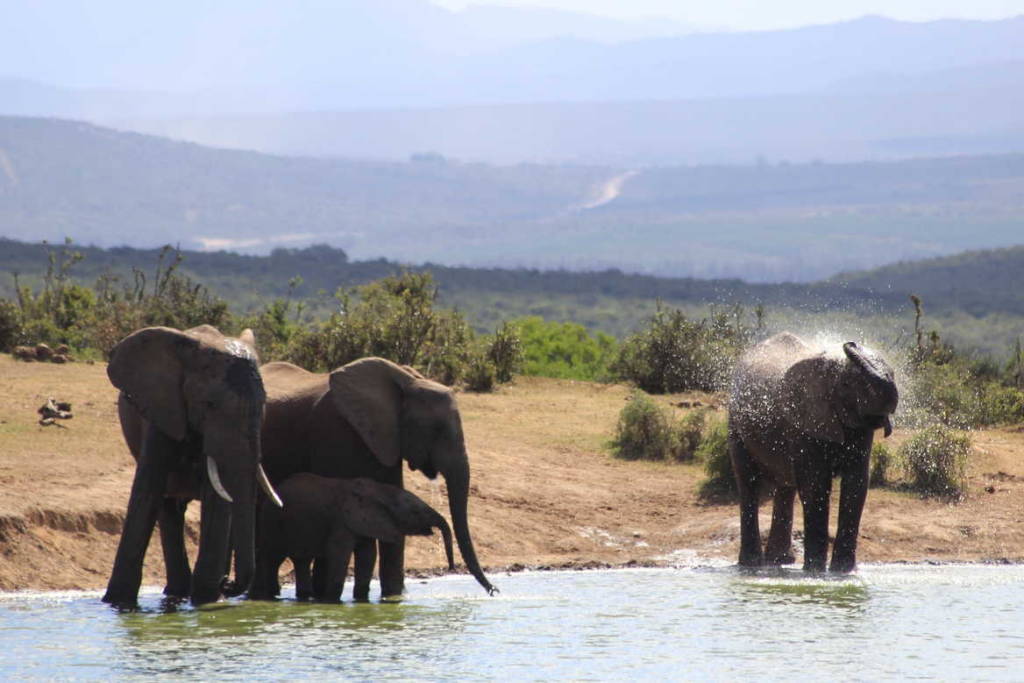 African elephants drinking
African elephants drinking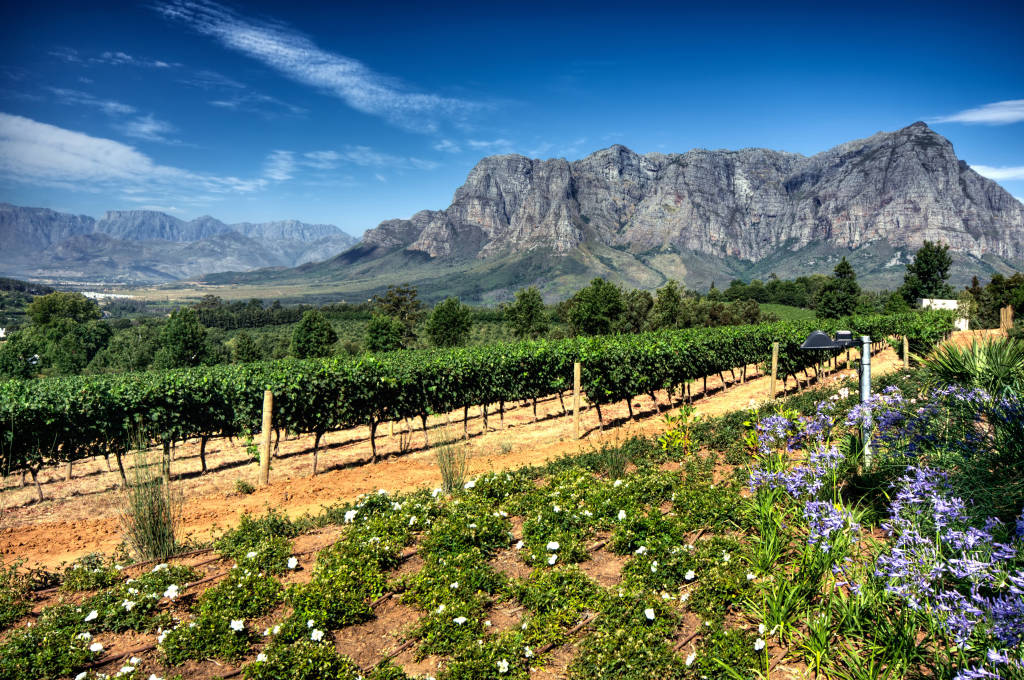 Cape Winelands
Cape Winelands

